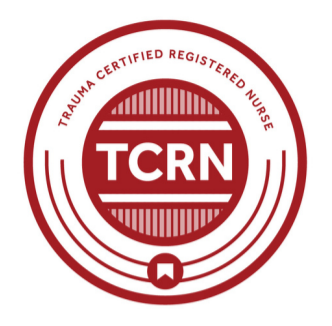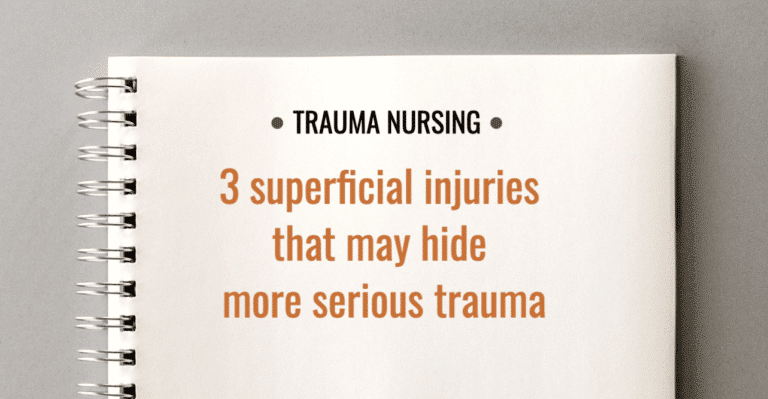Skin injuries and other surface trauma may appear minor on the outside, but looks can be deceiving. Trauma and emergency nurses should know how to recognize superficial injuries that may be signs of more serious trauma underneath the skin.
1. Lacerations over bony prominences
A laceration is an open wound typically caused by a sharp object but sometimes by blunt force. Superficial lacerations may only involve the epidermis and the dermis (the top two layers of the skin).
However, it is not always easy to tell how deep a laceration is. Deeper wounds of this type may include injuries to subcutaneous tissue, tendons, ligaments and muscle.
In addition, a laceration over a bony prominence should raise suspicion of fracture. For example, a scalp laceration with swelling is a well known sign of skull fracture. In addition, an apparent laceration in the area of the distal tibia could actually be a sign of an open fracture of the tibia or fibula.
2. Bruising to specific areas of the body
Bruises themselves are not serious, but they may point toward a more serious injury underneath. Trauma nurses should pay careful attention to:
- Bruising under the navel (also called “Cullen’s sign”) often indicates pancreatic injury.
- Bruising on the flanks (also called “Grey Turner’s sign”) can be associated with injury to either the pancreas or the kidneys.
- Bruising on the right upper abdominal quadrant or the right lower rib cage should raise suspicion of liver injury.
- Bruising on the left upper abdominal quadrant or the left lower rib cage should raise suspicion of spleen injury.
- Bruising on the chest or over the rib cage should raise suspicion of rib fracture, pulmonary contusion or pneumothorax.
- Bruising on the scalp behind the ears (also called “Battle’s sign”) or around the orbits (“raccoon eyes”) is often associated with basilar skull fracture.
- In addition, bruising over a bony prominence should raise suspicion of fracture (similar to lacerations as discussed above).
3. Large hematomas
Like a bruise, a hematoma is a closed wound caused by blunt trauma. The difference is that with a hematoma, blood collects beneath the skin and may cause a palpable mass.
Hematomas to any of the “bruise sign” areas described above can indicate the same underlying injuries.
In addition, trauma nurses should aware that a large hematoma can increase the pressure in surrounding tissue and thereby compromise circulation. For example, an expanding hematoma in the leg can lead to compartment syndrome.



